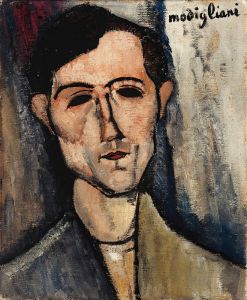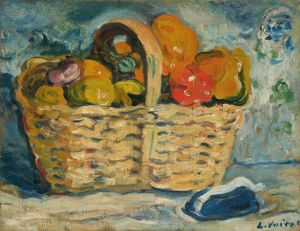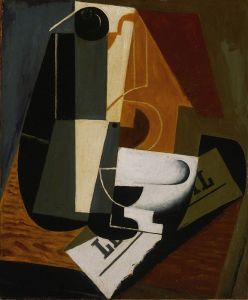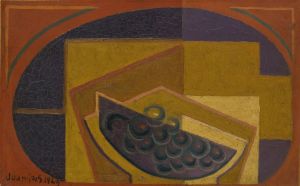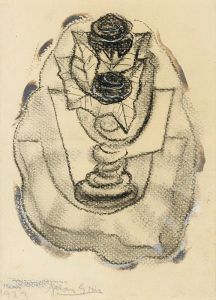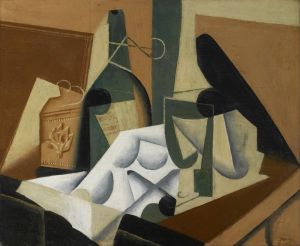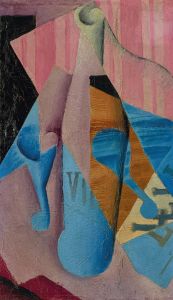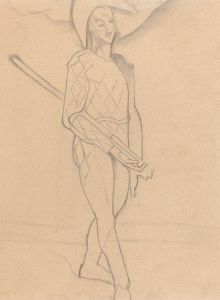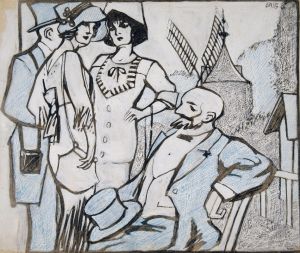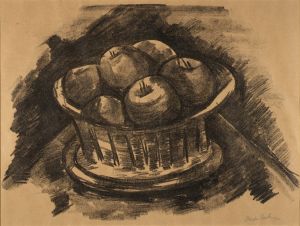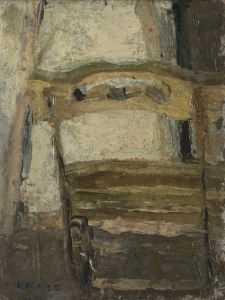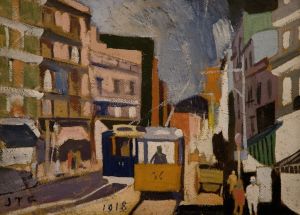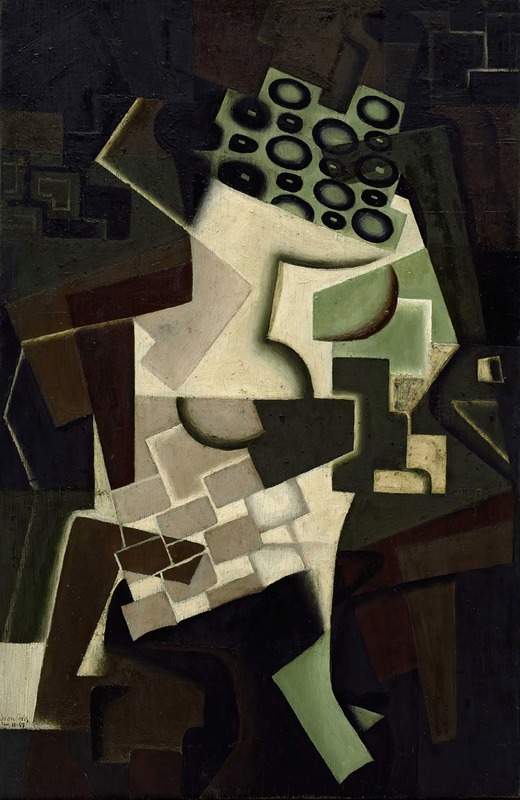
Compotier et nappe à carreaux
A hand-painted replica of Juan Gris’s masterpiece Compotier et nappe à carreaux, meticulously crafted by professional artists to capture the true essence of the original. Each piece is created with museum-quality canvas and rare mineral pigments, carefully painted by experienced artists with delicate brushstrokes and rich, layered colors to perfectly recreate the texture of the original artwork. Unlike machine-printed reproductions, this hand-painted version brings the painting to life, infused with the artist’s emotions and skill in every stroke. Whether for personal collection or home decoration, it instantly elevates the artistic atmosphere of any space.
"Compotier et nappe à carreaux" (Fruit Dish and Checkered Tablecloth) is a painting by the Spanish artist Juan Gris, completed in 1915. Gris, born José Victoriano González-Pérez in Madrid in 1887, was a prominent figure in the Cubist movement, which revolutionized European painting and sculpture in the early 20th century. His work is characterized by its clear, geometric forms and the use of vibrant color.
This particular painting, "Compotier et nappe à carreaux," exemplifies Gris's mature Cubist style. The composition features a still life arrangement, a common subject in Gris's oeuvre, which he approached with a meticulous sense of order and harmony. The painting depicts a fruit dish placed on a table covered with a checkered tablecloth. The objects are rendered in a fragmented, geometric manner typical of Cubism, where multiple perspectives are combined into a single image.
Gris's use of color in this painting is notable. He employs a palette of muted tones, with shades of brown, gray, and blue dominating the composition. The checkered pattern of the tablecloth adds a dynamic element to the piece, creating a sense of depth and texture. The interplay of light and shadow is carefully controlled, enhancing the three-dimensionality of the objects despite their abstracted forms.
The painting reflects Gris's interest in the relationship between objects and their environment. By breaking down the forms into geometric shapes, he explores the underlying structure of the objects and their spatial relationships. This analytical approach is a hallmark of Cubist art, which seeks to depict the essence of objects rather than their outward appearance.
"Compotier et nappe à carreaux" is also significant for its demonstration of Gris's skill in integrating different textures and materials within a single composition. The checkered tablecloth, for instance, contrasts with the smooth surfaces of the fruit and the dish, creating a rich visual tapestry. This attention to detail and texture is one of the reasons Gris is considered a master of the Cubist style.
Juan Gris's contributions to Cubism were highly influential, and his works are celebrated for their clarity, precision, and innovative use of form and color. "Compotier et nappe à carreaux" is a prime example of his artistic vision and technical prowess. Today, Gris's paintings are held in major art collections around the world, and his legacy continues to be studied and appreciated by art historians and enthusiasts alike.
In summary, "Compotier et nappe à carreaux" is a quintessential work by Juan Gris that captures the essence of Cubist still life painting. Through its geometric abstraction, controlled color palette, and intricate textures, the painting exemplifies Gris's unique approach to art and his significant role in the development of modernist aesthetics.





